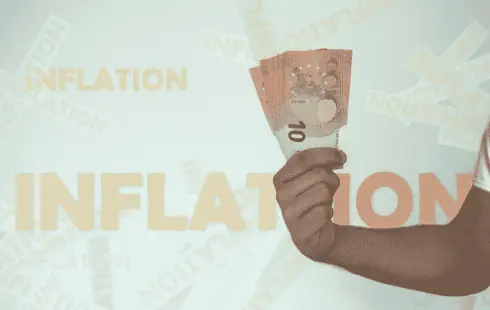
X Money: Musk's Platform Eyes Credit Card Services
Section: News
 Inflation in the euro zone has continued to fall. As the European statistics office Eurostat in Luxembourg announced on Wednesday after a first estimate, the inflation rate in January was 8.5 percent. In December, it had amounted to 9.2 percent.
Inflation in the euro zone has continued to fall. As the European statistics office Eurostat in Luxembourg announced on Wednesday after a first estimate, the inflation rate in January was 8.5 percent. In December, it had amounted to 9.2 percent.
Core inflation, which excludes energy and food prices, which are prone to fluctuations, remained at 5.2 percent in January. This is the highest level since the introduction of the euro and shows that price increases are not only affecting energy and raw materials.
Inflation rates for energy, industrial goods and also services declined. Foodstuffs, on the other hand, became even more expensive on average than in December.
"The inflation figures at the beginning of the year show it once again: the target of 2 percent is still a long way off for the ECB," said Fritzi Köhler-Geib, chief economist at KfW, commenting on the figures. With this magnitude, she said, it was ultimately irrelevant that adjustments to the weighting scheme and changes in government energy market interventions had had a strong impact on the price measurement in January.
"For what matters more for the stance of monetary policy is how inflationary pressures develop across the broad economy," the economist said. The core inflation rate is likely to remain stubbornly high into 2023, she said. That's caused by an improved economic outlook, a tight labor market, high wage demands and a high share of European companies expecting sales prices to continue to rise. "Even if the pace of consumer price inflation eases significantly in the coming months due to declining contributions from energy price inflation, further ECB rate hikes are essential because of persistently high core inflation."
At the end of last year, the rate had fallen somewhat, partly due to numerous government interventions in energy prices in various euro countries. In October, it had reached its highest level for the time being at 10.6 percent and then dropped to 10.1 percent in November and 9.2 percent in December. Economists had partly expected the rate to rise again somewhat in January. However, this does not seem to have materialized.
One reason for the declining inflation rates in the previous year had been the somewhat lower energy prices again as well as government aid programs for households. In Germany, for example, the government had taken over the December discount on household gas bills. Statisticians had decided to take this quite largely into account when calculating the December inflation rate. This effect has now been dropped out in January.
Developments in the individual euro countries were quite varied. In Latvia, for example, the rate rose to 21.6 percent. It also increased in Spain, France and Austria. By contrast, it fell significantly in Italy, for example, from 12.3 to 10.9 percent.
The price of oil was again slightly higher in January than at times in December. Nevertheless, energy prices overall did not rise as much as had been feared before the winter. In the case of foodstuffs, the situation is different: For some, the price increase has recently not been as strong as at times last year. Others, such as sugar, only became significantly more expensive with a slight time lag. On average, however, the price increase has actually continued.
Paper, on the other hand, has recently become slightly cheaper again after an extreme price increase last year - because paper mills demanded a lower energy surcharge due to the lower gas price.
No inflation rate published from Germany
There was a peculiarity in the inflation rate this time in Germany: the Federal Statistical Office in Wiesbaden has not announced its own inflation rate for January. This is expected to happen in the coming week. The reason given was software problems. These are said to have occurred in connection with a "revision", a regular rebasing of the consumer price index. The individual federal states already had difficulties calculating their inflation rates.
The European statistics office Eurostat, which normally needs the value from Germany to calculate the European inflation rate, therefore worked with an estimate for Germany, which is not to be published.
Joerg Krämer, the chief economist at Commerzbank, said he had never experienced anything like this in his long career. He expressed no understanding that if there was an estimate for Germany that Eurostat was now working with, it would not be published.
Most economists expect the inflation rate to fall further in the course of the year. However, this does not necessarily mean that inflation will largely disappear. Many forecasts expect inflation to remain at 5 to 7 percent on average for the year.
How does the European Central Bank react?
This further development of inflation is also important for the European Central Bank: On Thursday, the ECB Governing Council will meet to decide on the future monetary policy of the euro area central bank. The ECB is expected to raise interest rates again by 0.5 percentage points. It is also expected to publish details on the reduction of its multi-billion bond holdings.
ECB President Christine Lagarde had recently said quite clearly at the annual kick-off of Deutsche Börse that interest rates would have to rise further. Bundesbank President Joachim Nagel had made similar comments. However, there had also been voices from the ECB Governing Council that sounded somewhat more reserved.
Jari Stehn, chief European economist at the investment bank Goldman Sachs, now predicts that the ECB will raise interest rates by 0.5 percentage points in both February and March - as well as a final rate hike of 0.25 percentage points in May.
Image by Alexandra Koch

Section: News

Section: News

Section: Health

Section: News

Section: Politics

Section: Politics

Section: News

Section: Politics

Section: Health

Section: Health

Health Insurance in Germany is compulsory and sometimes complicated, not to mention expensive. As an expat, you are required to navigate this landscape within weeks of arriving, so check our FAQ on PKV. For our guide on resources and access to agents who can give you a competitive quote, try our PKV Cost comparison tool.

Germany is famous for its medical expertise and extensive number of hospitals and clinics. See this comprehensive directory of hospitals and clinics across the country, complete with links to their websites, addresses, contact info, and specializations/services.

Günther Uecker (1930-2025) was one of the most active, internationally successful, and beloved artists in Germany. His name is inseparably linked to the legendary Zero Group, particularly known for his nail reliefs, which are highly esteemed worldwide. Most recently, in January 2025, four...
No comments yet. Be the first to comment!